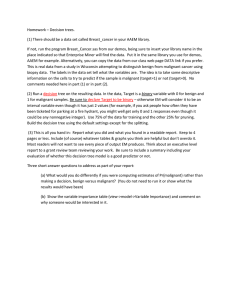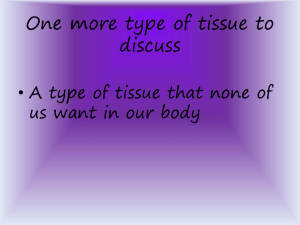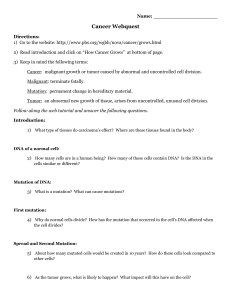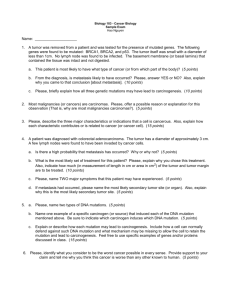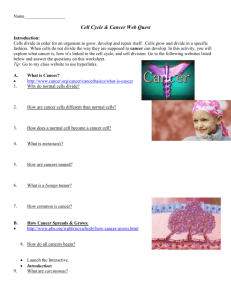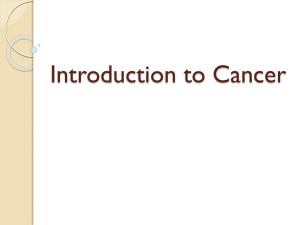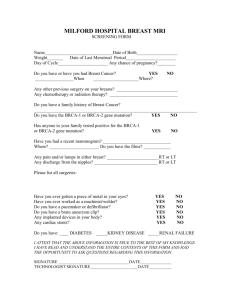A Closer Look at Cancer
advertisement
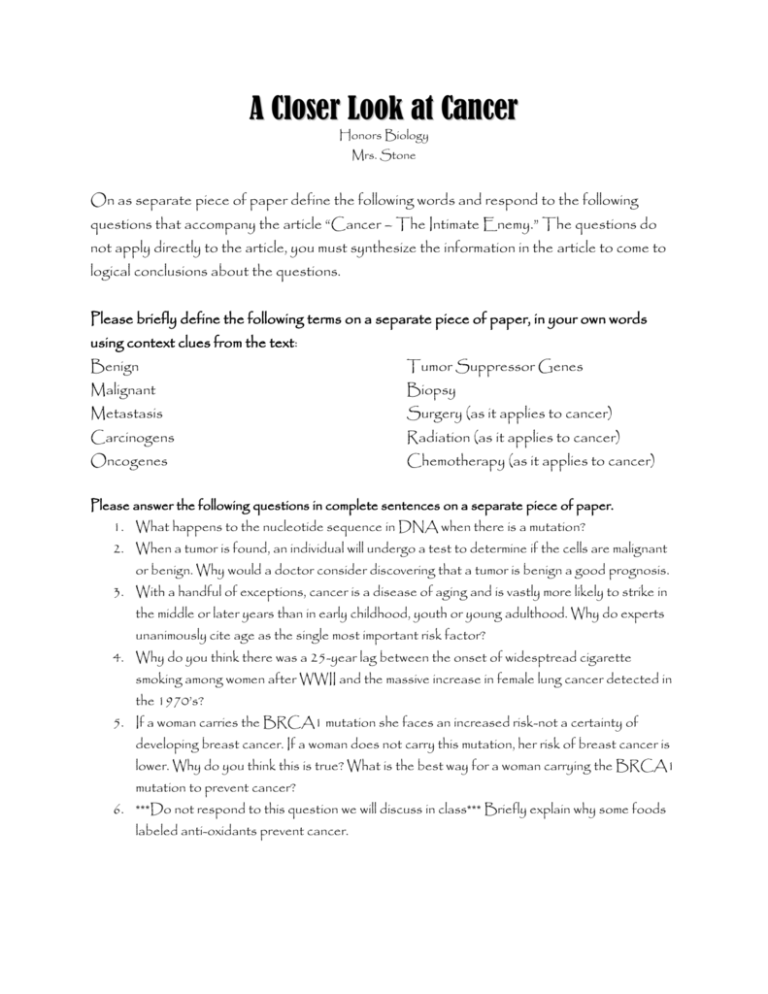
A Closer Look at Cancer Honors Biology Mrs. Stone On as separate piece of paper define the following words and respond to the following questions that accompany the article “Cancer – The Intimate Enemy.” The questions do not apply directly to the article, you must synthesize the information in the article to come to logical conclusions about the questions. Please briefly define the following terms on a separate piece of paper, in your own words using context clues from the text: Benign Tumor Suppressor Genes Malignant Biopsy Metastasis Surgery (as it applies to cancer) Carcinogens Radiation (as it applies to cancer) Oncogenes Chemotherapy (as it applies to cancer) Please answer the following questions in complete sentences on a separate piece of paper. 1. What happens to the nucleotide sequence in DNA when there is a mutation? 2. When a tumor is found, an individual will undergo a test to determine if the cells are malignant or benign. Why would a doctor consider discovering that a tumor is benign a good prognosis. 3. With a handful of exceptions, cancer is a disease of aging and is vastly more likely to strike in the middle or later years than in early childhood, youth or young adulthood. Why do experts unanimously cite age as the single most important risk factor? 4. Why do you think there was a 25-year lag between the onset of widesptread cigarette smoking among women after WWII and the massive increase in female lung cancer detected in the 1970’s? 5. If a woman carries the BRCA1 mutation she faces an increased risk-not a certainty of developing breast cancer. If a woman does not carry this mutation, her risk of breast cancer is lower. Why do you think this is true? What is the best way for a woman carrying the BRCA1 mutation to prevent cancer? 6. ***Do not respond to this question we will discuss in class*** Briefly explain why some foods labeled anti-oxidants prevent cancer.



